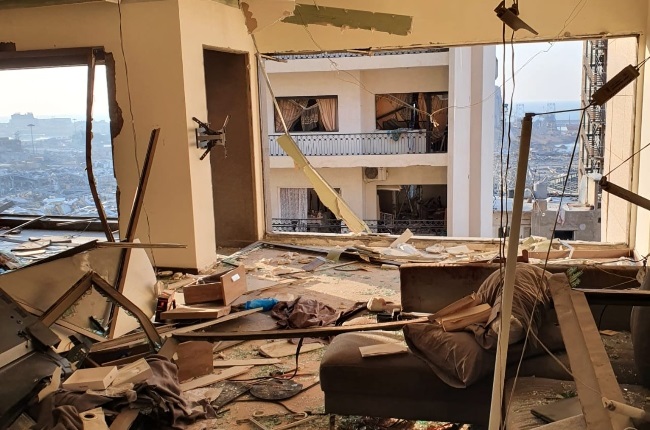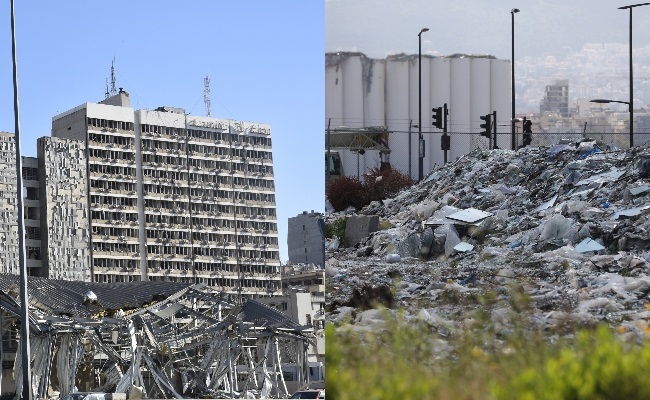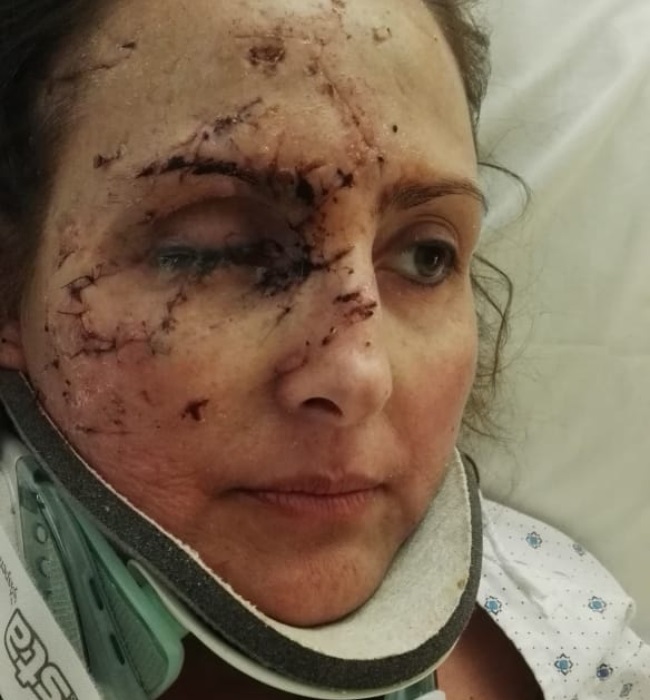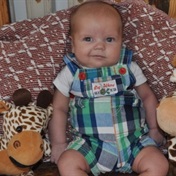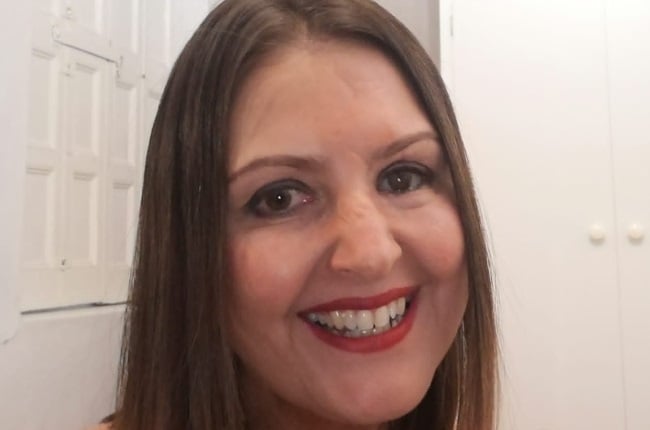
Her arms are crisscrossed with discoloured patches, but these are the scars of a woman who survived one of the biggest explosions in history – and she won’t keep them hidden under long sleeves.
In fact, Tracey Bolton is proud of her healed wounds. “I’ve got scars here,” she points to her chest. “And I’ve got some on my neck and legs as well.”
The explosion was the second time she cheated death in the space of two years and Tracey’s road to recovery is nothing short of inspirational. “I wear my scars with pride – I don’t hide them because they tell a story,” she tells YOU.
The 47-year-old is currently in Greece for business and can’t wait to get back to the peace and quiet of her home in St Francis Bay in the Eastern Cape. She doesn’t take the tranquillity of her hometown for granted, especially after the trauma she endured two years ago.
On 4 August 2020, Tracey survived one of the biggest non-nuclear blasts in history when 2 750 tons of ammonium nitrate exploded in a warehouse in Beirut, Lebanon, close to the apartment where she and her husband were living.
She lost her right eye, damaged a tendon at the base of her spine and broke an ankle when the port went up in a blaze. And this happened just a year after surviving a heart attack.
It’s the first time she’s opening up about the tragedy that claimed the lives of 218 people and injured thousands more.
Tracey was knocked off her feet when the warehouse went up in flames just a stone’s throw from her flat. The explosion was so powerful that it left a 45-metre crater where the warehouse used to be.
When she woke up in her living room, window frame fragments, glass and other debris had ripped into her skin.
“I knew that something had hit my eye because I couldn’t open it,” she says.
Her road to recovery has been long and painful. She spent a few weeks in hospital where she underwent several surgeries to repair her eye, ankle and skin. Although her skin graft surgeries were successful, doctors were unable to save her eye and she had to have a prosthetic eye fitted.
READ MORE | The giant explosion has sparked protest and unrest
Tracey’s ankle is held together with metal pins but she’s not looking for pity. She’s sharing her story to inspire others.
“I’m a warrior, not a victim,” she says. “I’m not going to let what has happened dictate my life.”
The self-confessed travel addict works as a sales and marketing director for a large hotel group and moved to Lebanon for work in 2018. “We lived in a trendy area called Mar Mikhaël and we’d just go out to restaurants in the evening. I fell in love with the Lebanese people, the history and the culture,” she says.
Her troubles in the Middle Eastern country started in June 2019 when she suffered a sudden pulmonary embolism, causing a blood clot to get lodged in her lung. Tracey was rushed to hospital where she went into cardiac arrest.
“They spent 41 minutes resuscitating me,” she recalls.
Doctors at the American University of Beirut Medical Center told her husband, who prefers to stay out of the spotlight, that she had little chance of survival. But Tracey proved to be a fighter. She responded to treatment, going from strength to strength, until she was eventually discharged after 29 days.
Little did she know that she’d end up in the same hospital not long afterwards.
On the evening of the blast, she’d just got home from work when her husband pointed at the huge fire at the port, which he could see from their fifth-floor apartment.
“As I got up to look, I remember hearing this massive sound and glass shattering,” she says. “I was only wearing my T-shirt and underwear. I was covered in blood. It looked like a grenade had gone off in my lap. I remember saying to myself, ‘Don’t fall asleep, don’t fall asleep,’ like they say in the movies. And then I felt calm,” she continues.
“I didn’t feel anything. The only pain I felt was in my big toe because my toenail had come off in the blast.”
When her husband regained consciousness, he went to look for the emergency services because he’d lost his phone in the chaos. Tracey was rescued from the rubble and rushed on a makeshift stretcher to the same hospital where she’d fought so hard to recover the previous year.
READ MORE | South Africans who were in the US on 9/11 share their memories of America's darkest day
She was intubated to help clear her airways so she could breathe properly. Although she was in agony from her multiple injuries, she was grateful to be alive. “I had massive scars on my face and legs. They had to take skin from my thigh to transplant it onto my lower legs.”
For seven days she lay motionless in her hospital bed to allow time for the skin graft to take. It was “absolute hell”, she says – even worse than losing her eye. “My husband was the one who told me I’d lost my eye and I was like, ‘That’s okay, I’ve got another one’.”
Tracey was discharged after seven weeks. She left the hospital in a wheelchair, but it wasn’t long before she was back on her feet again. “I started with baby steps. My husband would have to take me to the bathroom and carry me to bed, but I knew that having a positive attitude would help me get better,” she says.
When she was strong enough to fly, the couple returned to South Africa and put down roots in St Francis Bay. The coastal town’s fresh air was perfect for her recovery – she walked six kilometres every day to build her strength.
“I started swimming too, so I’d alternate between swimming and walking,” she says.
But although her body had started healing, her mind was troubled. She was diagnosed with post-traumatic stress disorder (PTSD) and her psychiatrist put her on medication to help her cope.
“I didn’t have traditional PTSD in the form of nightmares or being triggered by loud bangs. Instead, I suffered severe anxiety when walking,” she says.
Her mom Brenda Schmidt, sister Terri-Ann Schmidt, best friend Louise Rohner and aunt Cheryl Burger walked with her every day to help build her confidence.
Tracey knew she needed to recover one step at a time. “I’d use the railing one day and the next day I’d try walking up the stairs without it. Then I’d walk the entire staircase without using the railing,” she says.
She can’t believe how far she’s come. At one point she thought she wouldn’t be able to look at herself in the mirror, let alone land a job. Now she’s working for a new company and, she says, “It’s the best thing ever.”
She hopes her journey inspires people to persevere no matter what they’re going through. “You don’t know how strong you are until being strong is your only choice,” she says. “I fought and I survived because the fire within burned brighter than the fire around me.”




 Publications
Publications
 Partners
Partners





